Extended Tummy Tuck Complete Guide: Procedure, Recovery & Side Effects
Body Plastic Surgery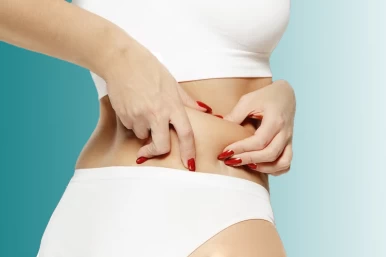
Many individuals may consider undergoing a tummy tuck procedure when pursuing an aesthetically enhanced body contour. Among the various types of tummy tucks available, the extended tummy tuck is a popular choice for those seeking comprehensive abdominal transformation.
An extended tummy tuck, also known as a circumferential tummy tuck surgery or a belt lipectomy, goes beyond addressing the abdominal area alone, extending the contouring to include the sides, lower back, and even the buttocks. It is a highly effective procedure for individuals who have experienced significant weight loss or multiple pregnancies, resulting in loose skin and stretch marks in these areas. By removing excess skin, tightening weakened muscles, and repositioning and reshaping the remaining tissue, an extended tummy tuck with muscle repair can lead to a more balanced and proportionate figure, enhancing appearance and self-confidence.
This article will explore everything you need to know about an extended tummy tuck, including its benefits, risks, the recovery process, and considerations regarding the scar.
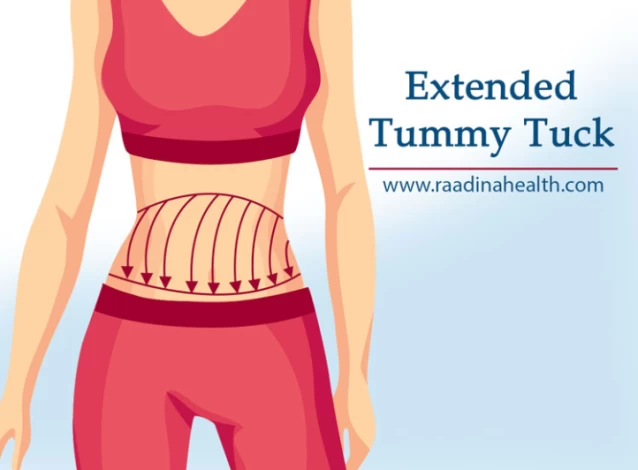
What Is an Extended Tummy Tuck, and How is It Done?
An extended tummy tuck is a cosmetic surgical procedure that removes excess skin and fat from the lower abdomen, hips, and back. The surgeon typically makes an incision in the pubic area between the hip bones during this procedure. If the patient has had a C-section, the same scar may be reopened.
Any separated muscles, such as those caused by pregnancy, are stitched together to create a firmer appearance. Diastasis recti, a splitting of the abdominal muscles, can also be corrected with an extended tummy tuck. Liposuction may be performed to remove any excess fat, and the belly button is removed before excess skin is removed from the abdomen and flank area. The remaining skin is pulled tight, and the belly button is sutured back into its original position unless the patient and surgeon change its shape.
Additionally, what does an extended tummy tuck include? Having a tummy tuck extended is a more extensive procedure than a traditional one. It addresses excess skin and tissue in the lower and upper abdomen, improving the patient's physique more comprehensively.
Extended Tummy Tuck Overview |
About | An extended tummy tuck, resembling abdominoplasty, focuses on the abdomen and addresses fat in the flanks and lower back. The extended tummy tuck incision typically spans from the lower pelvis to the lower back. |
Safety | Extended tummy tucks are generally deemed safe; however, like any surgery, they entail risks. Potential risks encompass swelling, fluid retention, anesthesia reactions, and postoperative numbness. |
Convenience | Tummy tucks are typically performed in a hospital setting under anesthesia. As elective procedures, they usually aren't covered by insurance. It's crucial to select a qualified, board-certified plastic surgeon you trust. |
Cost | The cost of a tummy tuck varies significantly based on location, procedure complexity, and area size. Prices typically range from $4,000 to $18,000. |
Effectiveness | Studies indicate high effectiveness with extended tummy tucks, with most individuals reporting satisfaction with the procedure's outcomes. |
How to Prepare for an Extended Tummy Tuck?
Preparing for an extended tummy tuck is essential for successful surgery and recovery. The first step is to schedule a consultation with a board-certified plastic surgeon specializing in tummy tucks. You can discuss your goals, medical history, and any concerns during this appointment. Your surgeon may also require a medical evaluation to ensure you are healthy enough for surgery. Choosing a surgeon with experience performing extended tummy tucks and someone you feel comfortable with is important.
Additionally, there are several steps you can take to prepare for an extended tummy tuck. These include stopping smoking at least four weeks before surgery, avoiding certain medications and supplements that can increase the risk of bleeding or interfere with anesthesia, and preparing your home for recovery by stocking up on groceries and arranging for help with household tasks. Your surgeon will also provide specific pre-operative instructions, such as fasting for a certain period and showering with a special soap. Following these steps can increase your chances of a safe and successful surgery and a smooth recovery.

What to Expect During Recovery from an Extended Tummy Tuck?
Recovery from an extended tummy tuck is longer than a full or mini abdominoplasty. Once they are medically fit, patients are typically discharged on the same day after the procedure. The length of an extended tummy tuck recovery time varies depending on age, skin quality, overall health, and the extent of surgical correction required.
Typically, patients can expect to experience some discomfort like swelling and bruising after tummy tuck in the days and weeks following the procedure. Pain medication prescribed by the surgeon can help manage any discomfort during this time.
Patients may need to rest and limit their activities in the first few days after surgery. They may also need assistance with daily tasks like bathing and dressing. The surgeon will provide specific post-operative instructions, and it is important to follow them carefully to ensure proper healing.
During the second week after a tummy tuck, patients may begin to feel better and be able to return to light activities. However, strenuous activities should be avoided for at least six weeks, and patients should also avoid lifting heavy objects during this time.
Compression garments are also important for recovery after an extended tummy tuck. They are typically worn for at least six weeks following the surgery to help reduce swelling and support healing. The compression garment helps hold the skin and tissues in place, reducing discomfort and promoting healing.
It is important to follow all post-operative care and instructions the surgeon provides to ensure proper healing and minimize the risk of complications. Patients should attend all follow-up appointments with their surgeons to monitor their progress and address concerns. With proper care and attention, most patients can expect to fully recover from an extended tummy tuck within six to eight weeks.
What Are the Risks or Complications Associated with an Extended Tummy Tuck?
An extended tummy tuck carries potential risks and side effects like any surgical procedure. Some potential risks and side effects of an extended tummy tuck may include:

Infection
There is a risk of developing an infection at the site of incisions or in the surrounding tissues. To mitigate this risk, antibiotics are usually prescribed post-surgery.
Bleeding
Excessive bleeding during or after the surgical procedure is a potential risk. This can require additional procedures to address the bleeding and ensure proper healing.
Seroma
Seroma refers to an accumulation of fluid under the skin at the incision site. Draining this fluid may be necessary; sometimes, a temporary drain might be placed during the extended tummy tuck recovery period.
Poor wound healing
Some individuals may experience poor wound healing, leading to delayed recovery or increased scarring. Factors such as smoking, diabetes, or pre-existing medical conditions can contribute to poor wound healing.
Scarring
An extended tummy tuck involves longer incisions than a traditional tummy tuck, which can lead to more significant scarring. Though the extended tummy tuck scar generally fades over time, it may still be visible. If you want more information about tummy tuck scars, don't forget to read this article.
Numbness or changes in sensation
Temporary or permanent changes in sensation, such as numbness or tingling, may occur in the abdominal region due to nerve damage during the extended tummy tuck procedure.
Blood clots
There is a risk of blood clot formation, known as deep vein thrombosis (DVT), particularly in the legs after an extended tummy tuck. Compression stockings and blood-thinning medications are often used to minimize this risk.
Anesthesia risks
As with any surgery, risks associated with anesthesia can include allergic reactions, respiratory problems, or adverse reactions to medications used during the extended tummy tuck procedure.
What Are the Targeted Areas for Extended Tummy Tuck?
The targeted areas for an extended tummy tuck include the entire abdominal area, from the pubic bone to the ribcage, as well as the flanks or love handles, waist, and sometimes the uppermost lateral area of the thigh.
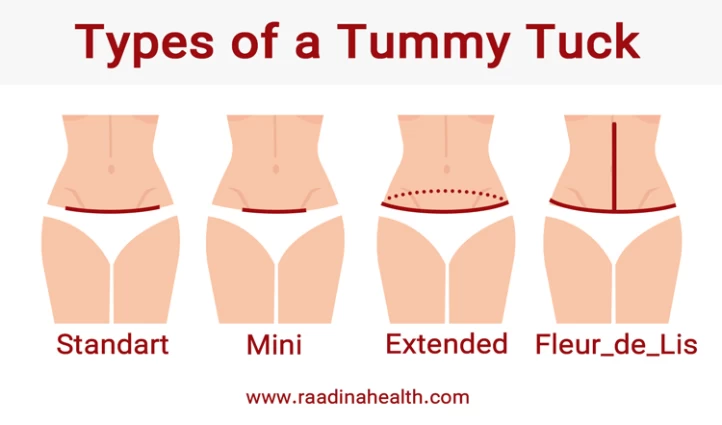
Who Is a Good Candidate for an Extended Tummy Tuck?
A good candidate for an extended tummy tuck is someone who has excess skin and fat not only in the abdominal area but also in the hips, flanks, and lower back. This procedure benefits individuals who have undergone significant weight loss or pregnancy or have loose skin due to aging or genetics. Candidates should be in good overall health, have realistic expectations, and have maintained a stable weight for at least six months.
Candidates must consult a board-certified plastic surgeon to determine if they are suitable for this surgery.
Extended Tummy Tuck vs. Traditional Tummy Tuck
An extended tummy tuck is a more extensive version of the traditional tummy tuck procedure. The main difference between the two procedures is the amount of excess skin and fat removed from the abdomen.
A traditional tummy tuck involves removing excess skin and fat from the lower abdomen, tightening the abdominal muscles, and repositioning the belly button. This procedure suits patients with moderate amounts of excess skin and fat in the lower abdomen.
On the other hand, an extended tummy tuck involves removing excess skin and fat from the entire abdomen, including the upper and lower abdomen, flanks, and hips. This procedure suits patients with significant excess skin and fat in these areas.
The extended tummy tuck procedure is more invasive than the traditional tummy tuck and requires a longer incision. It also has a longer recovery time and may require more post-operative care.
Both procedures can provide excellent results in contouring the abdomen and achieving a flatter, more toned appearance. The choice of procedure will depend on the individual patient's needs and goals, as well as their surgeon's recommendation.

Extended Tummy Tuck vs. a 360 Tummy Tuck
An extended tummy tuck and a 360-degree tummy tuck are variations of the traditional procedure. Still, they differ regarding the targeted areas of the body and the extent of the surgery.
An extended tummy tuck targets the lower abdomen, hips, and flanks with an incision extending around the body's sides. In contrast, a 360 tummy tuck addresses the entire midsection, including the front, sides, and back, with an incision encircling the midsection as the whole. Both procedures suit individuals with significant excess skin and tissue due to weight loss, pregnancy, or aging.
How Much Does an Extended Tummy Tuck Surgery Cost in Iran?
The cost of an extended tummy tuck surgery in Iran can vary depending on several factors, such as the surgeon's experience, the clinic's location, and the extent of the surgery required. On average, an extended tummy tuck surgery in Iran ranges from $1,800 to $3,500. However, it is important to note that these prices may not include additional costs such as anesthesia fees, hospital fees, and post-operative care.
Why Iran for Tummy Tuck?
Iran has become a popular destination for medical tourism, particularly for cosmetic surgery procedures like tummy tucks. The country offers a range of benefits that make it an attractive option for patients seeking affordable and high-quality care. With experienced surgeons, modern facilities, and cultural similarities that can make patients feel more comfortable, Iran is a promising destination for those seeking tummy tuck surgery.
Moreover, the opportunity to combine medical treatment with tourism is another factor that makes Iran an appealing choice for patients. The country has a rich history and culture, with many ancient sites and landmarks to explore. Patients can take advantage of their time in Iran to visit famous cities like Yazd and Isfahan or to experience the country's natural beauty by visiting the Caspian Sea or the Zagros Mountains. By combining medical treatment with tourism, patients can have a more enjoyable and memorable experience while benefiting from Iran's affordable and high-quality care.
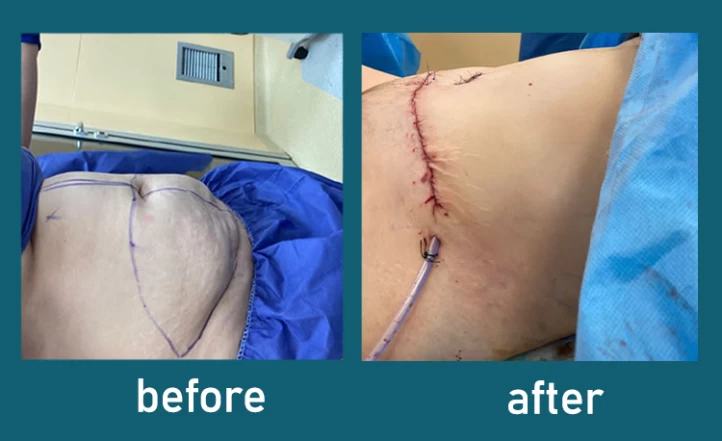
Extended Abdominoplasty FAQs
1) How long does an extended abdominoplasty surgery last?
The duration of an extended abdominoplasty surgery, also known as a tummy tuck, can vary depending on the individual patient's specific needs and the complexity of the procedure. An extended abdominoplasty surgery typically takes around 3 to 5 hours to complete. However, this timeframe can be shorter or longer depending on factors such as the amount of excess skin and fat to be removed, the need for muscle tightening, and any additional procedures being performed concurrently.
2) Does an extended abdominoplasty lift your pubic area?
An extended tummy tuck is intended to eliminate excess fat and enhance skin tightness in the abdominal area. It can also enhance the appearance of the pubic area. Nevertheless, if your pubic area is excessively saggy, an extended tummy tuck may not be effective.
3) What is the best age for an extended tummy tuck/ abdominoplasty?
Individuals between 18 and 68 (and sometimes older) are typically eligible for this procedure. However, the patient must be in good overall health.
4) Are there alternatives to an extended tummy tuck?
While radiofrequency-assisted liposuction is a non-surgical option for those with minimal skin and fat, it may not produce as dramatic results as the surgical procedure.
5) Can I get rid of FUPA with an extended tummy tuck?
Yes, an extended tummy tuck can help to address excess skin and fat in the lower abdomen, which may contribute to the appearance of a FUPA (fat upper pubic area).
6) What is the best BMI for undergoing an extended tummy tuck?
The maximum body mass index (BMI) for an extended tummy tuck can vary depending on the plastic surgeon's or surgical facility's specific requirements and guidelines. Generally, a BMI of 30 or lower is considered more suitable. However, some surgeons may consider patients with a slightly higher BMI on a case-by-case basis.
7) Is a Caesarean section or an extended tummy tuck more painful?
Both a Caesarean section and an extended tummy tuck are major surgical procedures with significant discomfort during the recovery period. The recovery from a C-section can involve discomfort at the incision site, abdominal soreness, and potential pain at the site of the uterine incision, while an extended tummy tuck recovery may include discomfort, swelling, bruising, and tightness in the abdominal area. Pain levels can vary depending on individual tolerance and specific procedure details, and both surgeries typically involve pain management strategies to alleviate discomfort.
8) Can you still become pregnant after undergoing an extended tummy tuck?
Yes, it is possible to become pregnant after undergoing an extended tummy tuck. The tummy tuck procedure primarily focuses on the abdominal area and does not interfere with reproductive organs or the ability to conceive. However, it's important to note that future pregnancies can potentially affect the results of a tummy tuck.
9) Will my extended abdominoplasty scar be noticeable?
The visibility of a scar from an extended abdominoplasty (tummy tuck) can vary depending on several factors, including the individual's skin type, the surgeon's skill, and how well the patient follows post-operative care instructions.
In general, the scar from an extended abdominoplasty is typically placed low on the abdomen, below the bikini line, which helps to minimize its visibility. Over time, the scar should fade and become less noticeable, especially if proper scar care is followed.
10) Can I combine my extended abdominoplasty with other procedures?
Some common procedures combined with an extended abdominoplasty include liposuction, breast augmentation or reduction, thigh lift, and arm lift. However, consulting with a board-certified plastic surgeon is important to discuss your goals and determine if combining procedures is safe and appropriate.
11) Can an extended abdominoplasty remove stretch marks?
An extended tummy tuck can help remove or reduce the appearance of stretch marks in the lower abdomen. However, it's important to note that stretch marks are scarring and difficult to eliminate. The extent of stretch mark removal will vary depending on the location, severity, and color of the stretch marks and the individual's skin type and healing process.
12) Can an extended tummy tuck be combined with liposuction?
Combining liposuction with an extended tummy tuck can often achieve enhanced body contouring. Liposuction can be performed with an extended tummy tuck to refine further the contours of the abdomen, flanks, and other surrounding areas. This combination approach allows for the removal of excess fat deposits and the tightening of loose skin and muscles, resulting in a more sculpted and toned appearance. However, combining these procedures will depend on various factors, including your anatomy, aesthetic goals, and your plastic surgeon's recommendations. During your consultation, your surgeon will assess your candidacy for both procedures and develop a personalized treatment plan tailored to your needs and desires.
 WhatsApp
WhatsApp
 Telegram
Telegram
 Facebook
Facebook
 Email
Email



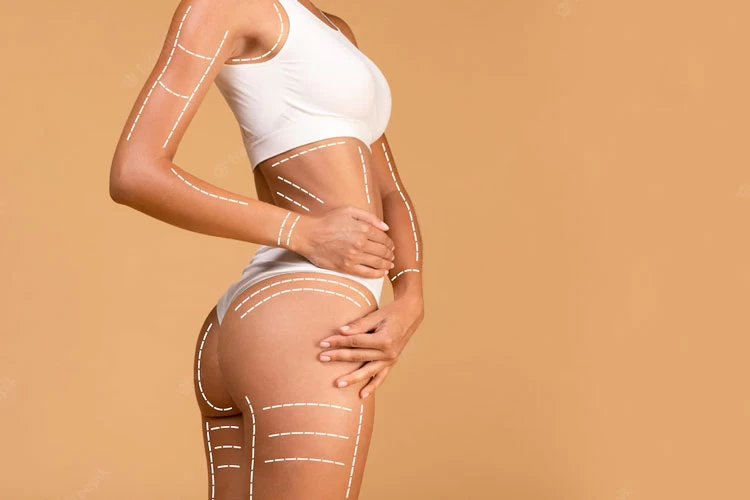


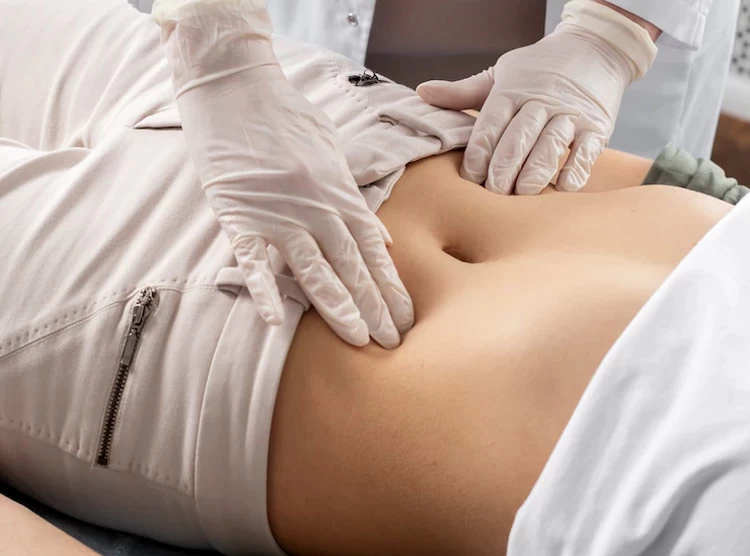

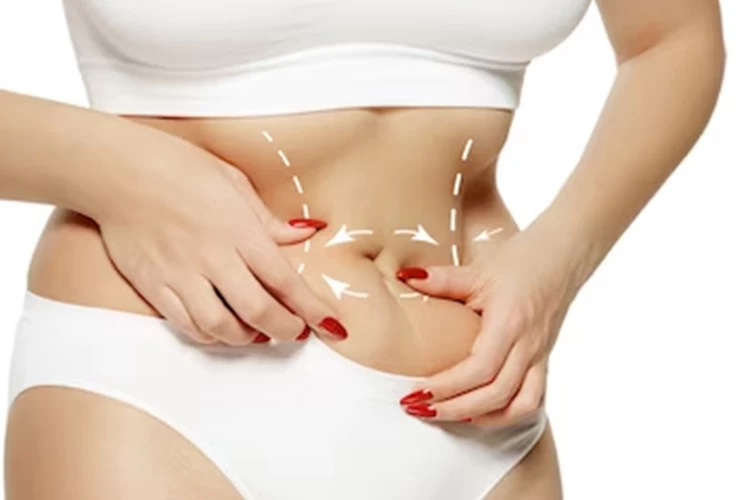


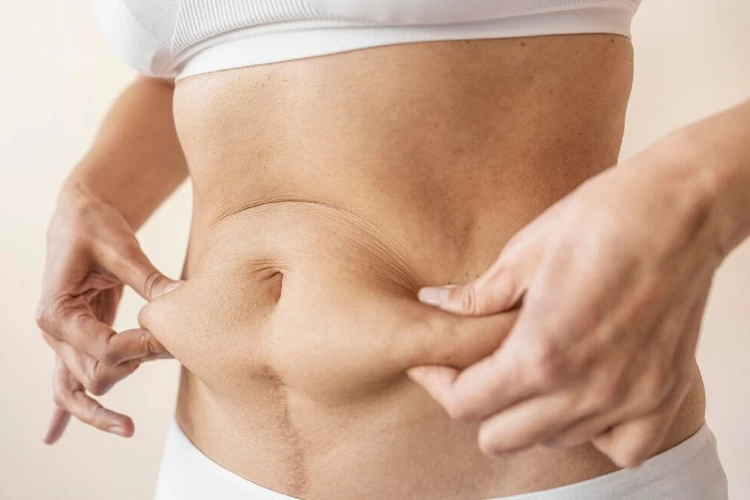





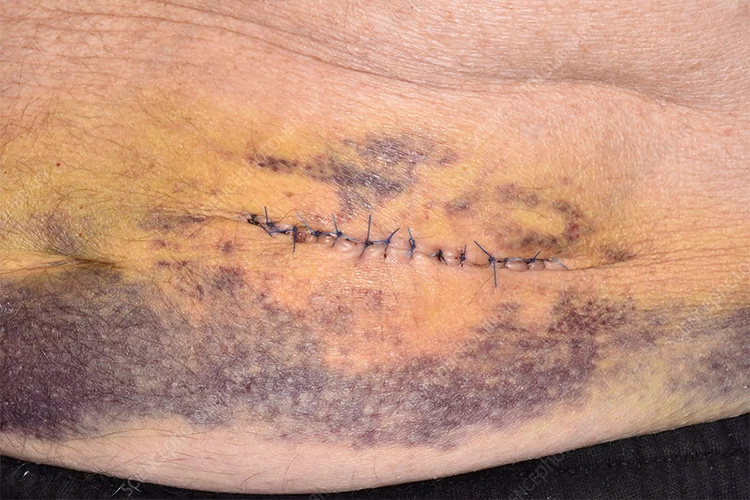



No reviews
Your comment